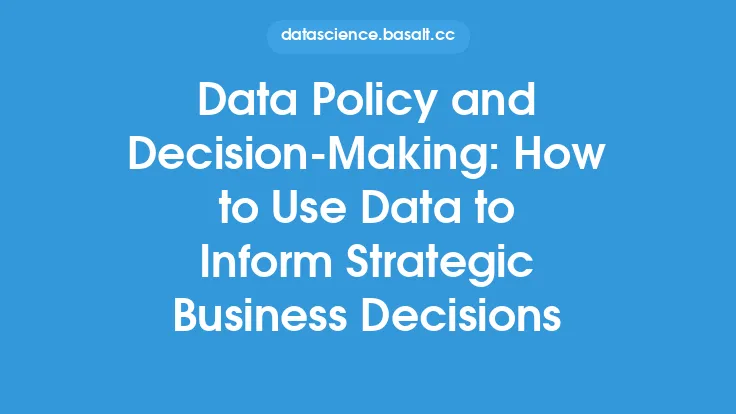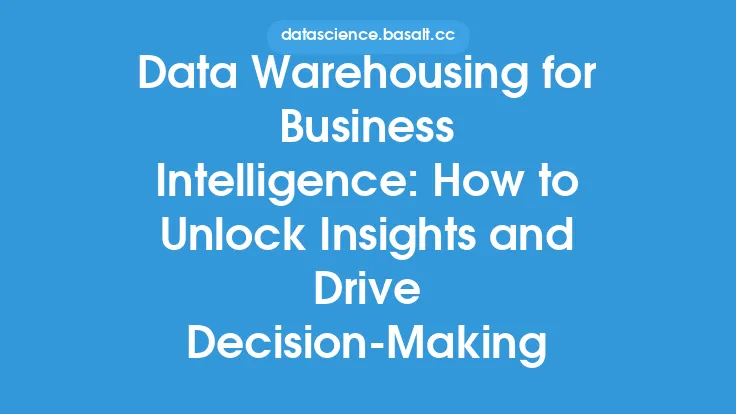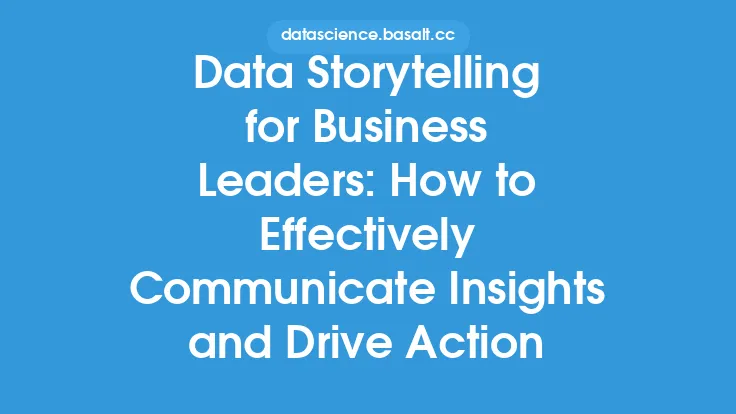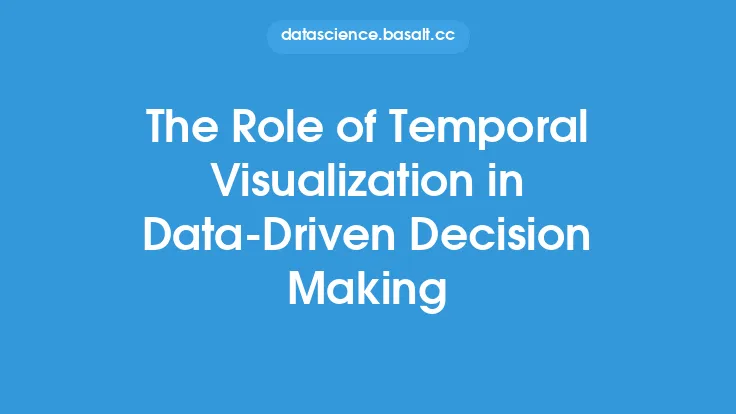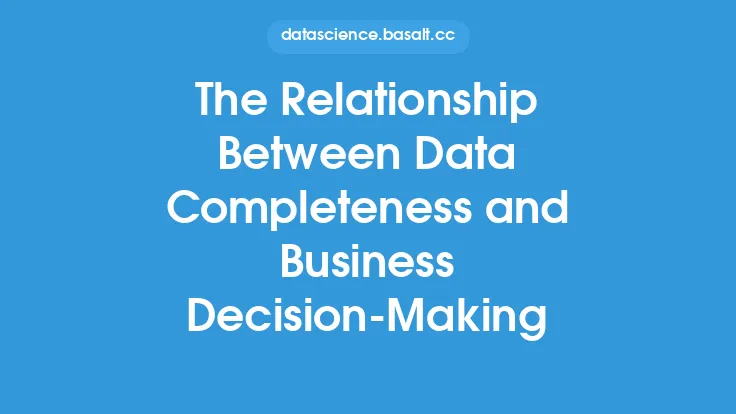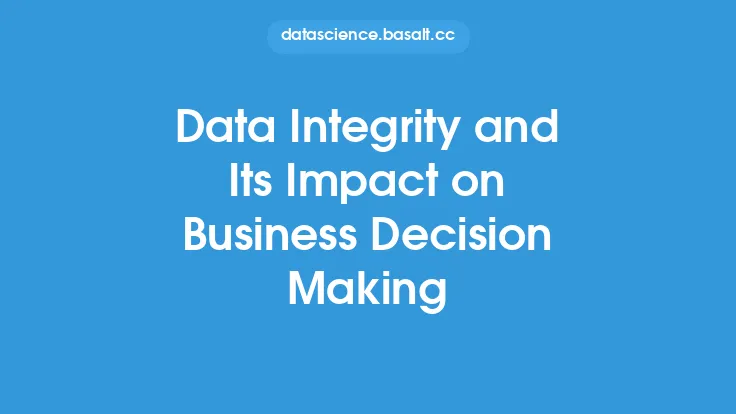In today's data-driven business landscape, organizations are constantly seeking ways to make informed decisions that drive growth, improve efficiency, and increase profitability. One key strategy that has emerged as a crucial component of business decision making is data visualization. By transforming complex data into intuitive and interactive visual representations, businesses can uncover hidden patterns, trends, and insights that inform strategic decisions. In this article, we will delve into the world of data visualization and explore how it drives business decision making, highlighting the benefits, techniques, and best practices that organizations can leverage to stay ahead of the curve.
Introduction to Data Visualization
Data visualization is the process of creating graphical representations of data to better understand and communicate complex information. It involves using visual elements such as charts, graphs, maps, and tables to display data in a way that is easy to comprehend and analyze. By using data visualization, businesses can simplify complex data sets, identify relationships between different variables, and gain insights that might be difficult to discern from raw data alone. Effective data visualization enables organizations to make data-driven decisions, optimize business processes, and drive innovation.
Benefits of Data Visualization in Business Decision Making
The benefits of data visualization in business decision making are numerous. Some of the most significant advantages include:
- Improved understanding of complex data: Data visualization helps to simplify complex data sets, making it easier for stakeholders to understand and analyze the information.
- Faster decision making: By providing a clear and concise visual representation of data, organizations can make decisions more quickly and with greater confidence.
- Enhanced collaboration: Data visualization enables teams to share insights and collaborate more effectively, driving a culture of data-driven decision making.
- Increased accuracy: Data visualization helps to reduce errors and inaccuracies by providing a clear and transparent view of the data.
- Better communication: Data visualization enables organizations to communicate complex data insights to stakeholders, including customers, investors, and partners.
Techniques and Tools for Data Visualization
There are numerous techniques and tools available for data visualization, each with its own strengths and weaknesses. Some of the most popular techniques include:
- Scatter plots: Used to display the relationship between two variables.
- Bar charts: Used to compare categorical data across different groups.
- Line charts: Used to display trends over time.
- Heat maps: Used to display complex data sets and identify patterns.
- Geospatial visualization: Used to display data related to geographic locations.
Some of the most popular tools for data visualization include:
- Tableau: A data visualization platform that enables users to connect to a wide range of data sources and create interactive dashboards.
- Power BI: A business analytics service by Microsoft that enables users to create interactive visualizations and business intelligence reports.
- D3.js: A JavaScript library for producing dynamic, interactive data visualizations in web browsers.
Best Practices for Effective Data Visualization
To get the most out of data visualization, organizations should follow best practices that ensure effective communication and insights. Some of the most important best practices include:
- Keep it simple: Avoid clutter and focus on the key insights and trends in the data.
- Use color effectively: Use color to draw attention to important information and to differentiate between different variables.
- Choose the right visualization: Select the visualization that best communicates the insights and trends in the data.
- Interactivity: Enable users to interact with the visualization, such as by filtering or drilling down into the data.
- Storytelling: Use data visualization to tell a story and communicate insights in a way that is engaging and easy to understand.
Technical Considerations for Data Visualization
When implementing data visualization, organizations should consider several technical factors to ensure effective and efficient visualization. Some of the most important technical considerations include:
- Data quality: Ensure that the data is accurate, complete, and consistent.
- Data processing: Use efficient data processing techniques to handle large and complex data sets.
- Scalability: Ensure that the visualization can handle large volumes of data and scale to meet the needs of the organization.
- Security: Ensure that the visualization is secure and access is restricted to authorized users.
- Integration: Integrate the visualization with other business systems and tools to enable seamless data flow and analysis.
Real-World Applications of Data Visualization
Data visualization has numerous real-world applications across various industries, including:
- Finance: Data visualization is used to analyze financial data, identify trends, and make informed investment decisions.
- Healthcare: Data visualization is used to analyze patient data, identify patterns, and improve healthcare outcomes.
- Marketing: Data visualization is used to analyze customer data, identify trends, and optimize marketing campaigns.
- Operations: Data visualization is used to analyze operational data, identify inefficiencies, and optimize business processes.
By leveraging data visualization, organizations can gain a competitive edge, drive innovation, and make informed decisions that drive business success.
Future of Data Visualization
The future of data visualization is exciting and rapidly evolving. Some of the most significant trends and developments include:
- Artificial intelligence: AI is being used to enhance data visualization, enabling organizations to automate data analysis and identify insights more quickly.
- Virtual and augmented reality: VR and AR are being used to create immersive and interactive data visualizations, enabling organizations to engage with data in new and innovative ways.
- Big data: The increasing volume and complexity of big data are driving the development of new data visualization techniques and tools.
- Cloud computing: Cloud computing is enabling organizations to access and analyze large data sets more easily, driving the adoption of data visualization.
By staying ahead of these trends and developments, organizations can unlock the full potential of data visualization and drive business success in a rapidly changing world.
